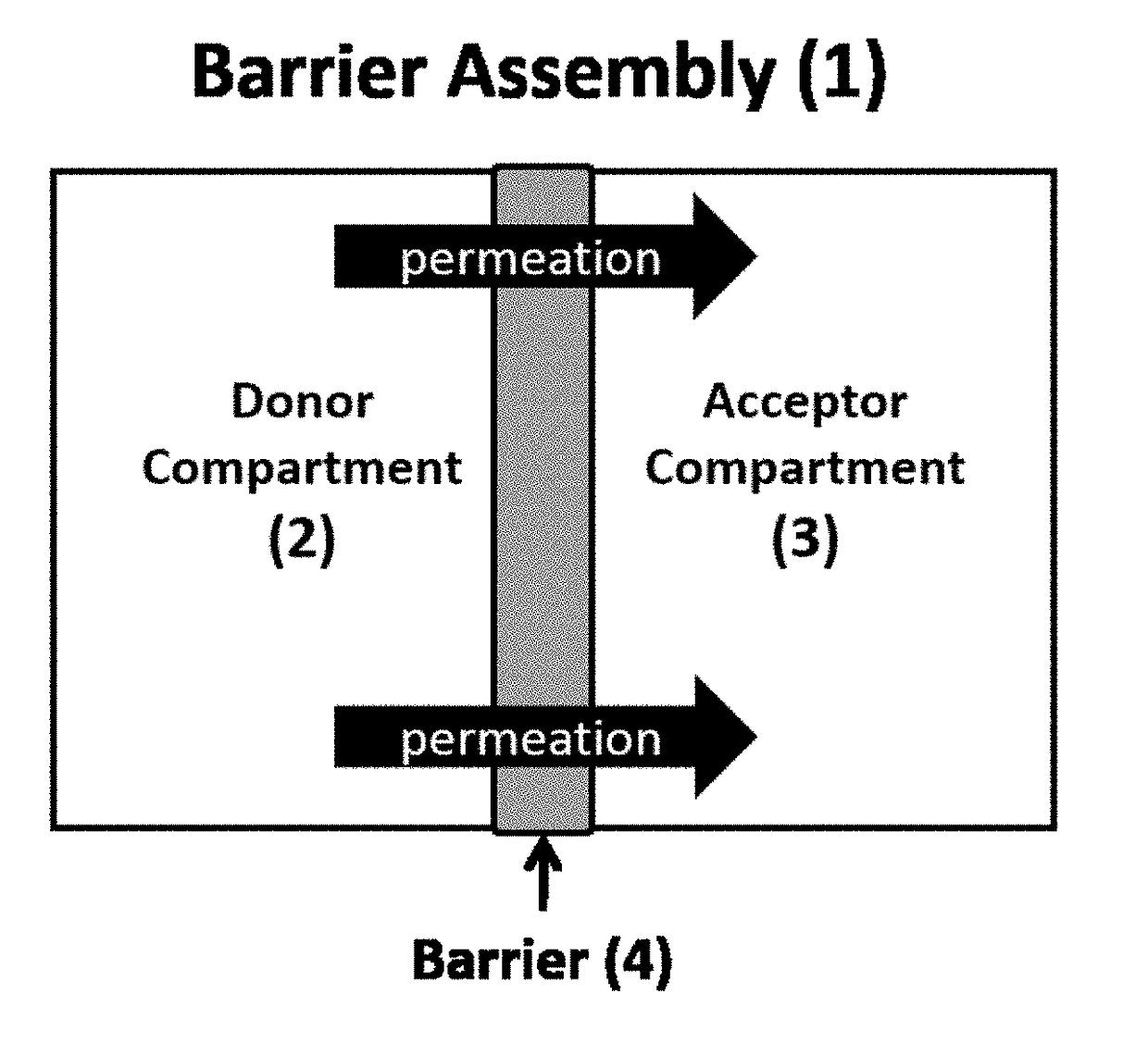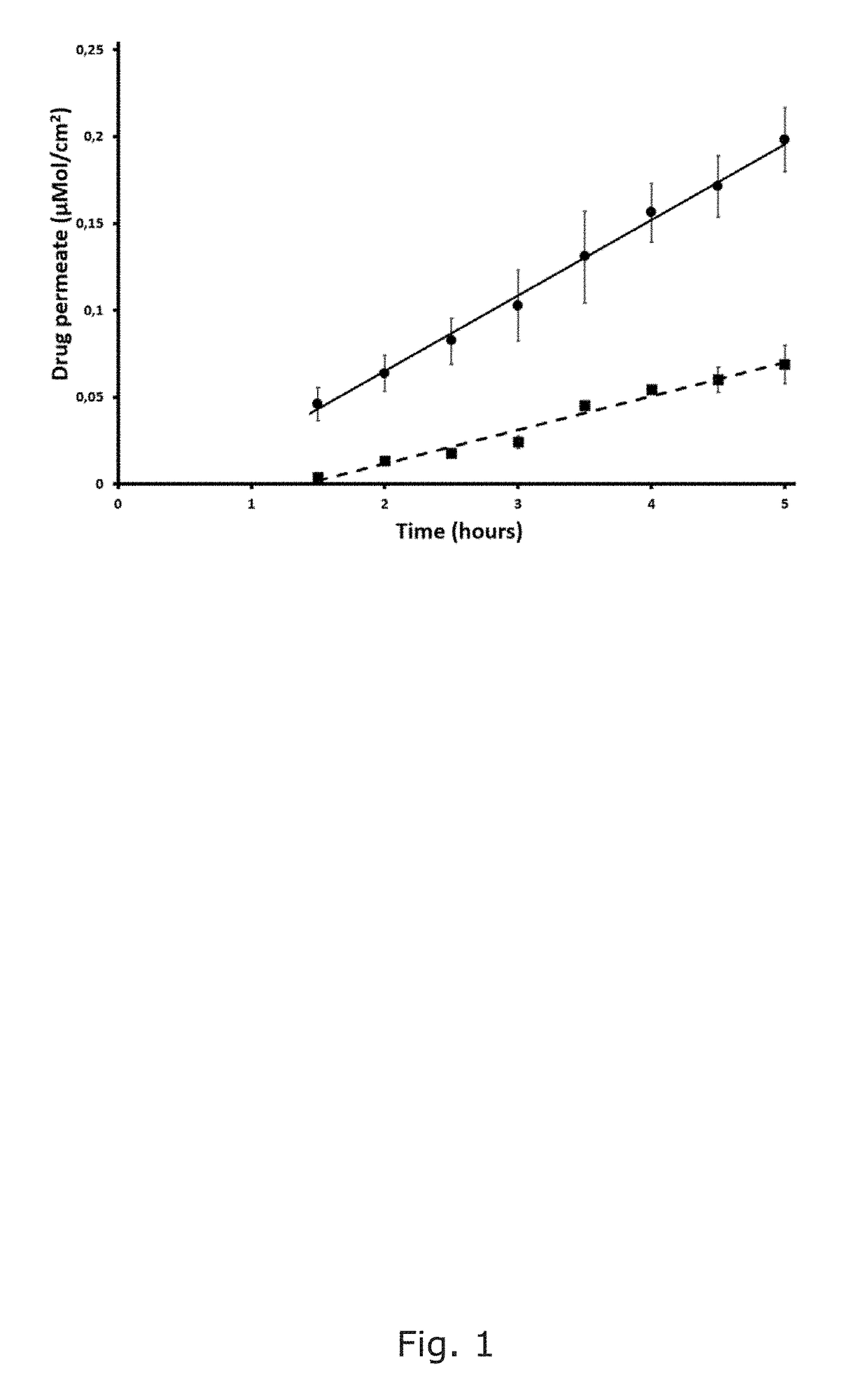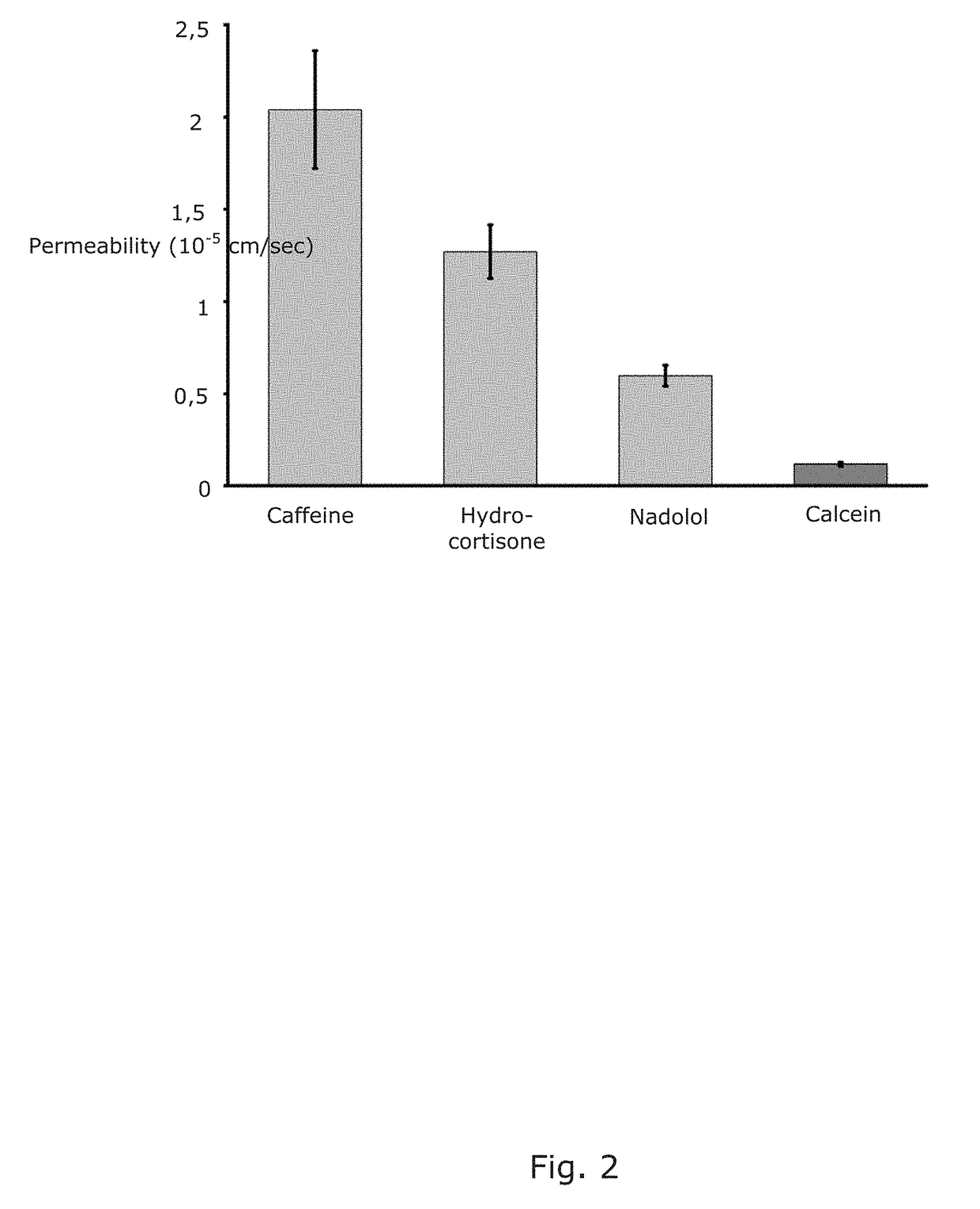Assembly for assessing drug permeability with adjustable biomimetic properties
a biomimetic property and assembly technology, applied in the field of permeation assay, can solve the problems of not being commonly used in the industry, laborious and laborious handling of this model, poor comparability between laboratories, etc., and achieve the effect of fast and reliable prediction of passive drug permeability
- Summary
- Abstract
- Description
- Claims
- Application Information
AI Technical Summary
Benefits of technology
Problems solved by technology
Method used
Image
Examples
example 1
[0150]Permeability of a hydrophilic marker compound (calcein) and a drug compound (hydrocortisone) is measured through a barrier according to the present invention.
[0151]A sheet of cellulose hydrate was prewashed in demineralized water. The sheet was put on a flat surface and sprayed with a 1% (M / M) solution of egg yolk lecithin (E-80, Lipoid GmbH, Ludwigshafen, Germany) in ethanol. The total amount of phospholipids deposited was 0.4 to 0.5 mg / cm2. Once the organic solvent was evaporated, two coated sheets were placed one upon the other, sandwiching the phospholipids.
[0152]Frantz cells with a permeation surface of 1 cm2, a maximum volume in the upper compartment of 1.8 mL and a fixed volume in the bottom compartment of 8 mL were used.
[0153]The barrier was placed in between of the donor and the acceptor chamber, and a permeability experiment was performed at 25° C.
[0154]A saturated dispersion of hydrocortisone in phosphate buffer (pH 7.4) was placed in the 8 mL lower compartment. The...
example 2
[0157]In this example, the permeabilities of three drugs were compared with the permeability of the marker compound calcein through the barrier described in Example 1. Similar results have been obtained using S100.
[0158]FIG. 2 shows the permeability coefficients of hydrocortisone, nadolol, and caffeine compared with the marker calcein through the barrier of the present invention. These data are in agreement with permeabilities measured in other assays and indeed mimic the corresponding fluxes over biological membranes.
[0159]Since the three compounds cover a representative selection for such assays it is concluded that the barrier of the present invention is very applicable for such measurements.
example 3
[0160]According to the present example, the permeability of a hydrophilic marker compound (calcein) and a drug compound (hydrocortisone) is measured through a barrier according to the present invention. The integrity of the barrier was measured only by calcein permeability studies as suggested by (Flaten, Dhanikula et al. 2006 [9]).
[0161]The aim of this example is to evaluate how surfactants, co-solvents would affect the barrier of the present invention.
[0162]Permeability studies were carried out employing surfactants and co-solvents as media, along with the hydrophilic marker calcein, which is used in high concentration to show possible leaks of the barrier. The apparent permeability coefficients (Papp) were determined and compared to the values in buffer, and to literature on other in-vitro models.
[0163]For all permeability studies, Franz diffusion cells with a surface area of 1 cm2, upper chamber nominal volume of 2 mL and lower chamber volume of 8 mL were employed. The donor pha...
PUM
| Property | Measurement | Unit |
|---|---|---|
| thickness | aaaaa | aaaaa |
| diameter | aaaaa | aaaaa |
| thickness | aaaaa | aaaaa |
Abstract
Description
Claims
Application Information
 Login to View More
Login to View More - R&D
- Intellectual Property
- Life Sciences
- Materials
- Tech Scout
- Unparalleled Data Quality
- Higher Quality Content
- 60% Fewer Hallucinations
Browse by: Latest US Patents, China's latest patents, Technical Efficacy Thesaurus, Application Domain, Technology Topic, Popular Technical Reports.
© 2025 PatSnap. All rights reserved.Legal|Privacy policy|Modern Slavery Act Transparency Statement|Sitemap|About US| Contact US: help@patsnap.com



